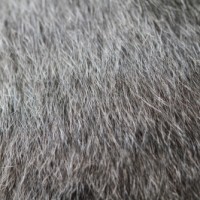In our last article we looked at Overweight Cats, today we look at External parasites. Fleas and ticks are one of the most annoying pests for cats. The Cat Fleas and Cat Ticks sole purpose is to survive and the way they do this is by feeding on the blood from your pet. These bites can cause irritation and itching on the cats tender skin. In extreme cases your cat will sometimes lick an area until there is no longer any hair there (a bald spot), this leaves the tender skin exposed to infection and other irritation.
What are Cat Fleas and Cat Ticks?
Cat Fleas (Ctenocephalides felis) are wingless, external parasitic insects that can jump very high. They have six legs and will not only infest your cat, but they will also infest furniture, carpeting and even you.
Ticks (also external parasites) on the other hand have eight legs and are considered arachnids (spiders). A tick will latch on to the cat and suck the blood until it gets its fill. At this point a tick will usually drop off of the cat leaving an irritation where it has bitten your pet.
How do Cat Fleas and Cat Ticks Affect Kitty?
There are many effects that fleas and ticks have on your cat. Some of these include:
- When fleas and ticks inject saliva into kitty’s tender skin they often cause an allergy to form. A typical example of this would be flea allergy dermatitis. If kitty has this he or she will often scratch and bite and eventually lose his or her hair in that area.
- In extreme cases, another danger is if kitty becomes Anemic (a condition where the blood lacks enough healthy red blood cells or hemoglobin) from infestation. Cats can actually become anemic and die if they have a heavy case of Cat Fleas or Cat Ticks.
- One species of tapeworms can also be transmitted via fleas to cats.
- Cat Ticks can transmit anaplasmosis, tularemia and cytauxzoonosis (a very lethal condition that involves a blood parasite that currently has no effective treatment) when they bite kitty.
- Finally ticks also can pass lyme disease to your cat, however cat seem appear to be immune.
Treatments
There are several ways to help control Cat Fleas and ticks on your cat, these include:
- There are flea sprays and mists which can be sprayed directly on kitty to kill any fleas that are currently attacking you pet. The sprays and mists are said to also repel fleas if they aren’t currently infested.
- Your veterinarian can also give your cat a pill that when the flea ingests the blood the IDI lufeneron in the pill stops the flea from producing eggs. Unfortunately, this doesn’t address the current infestation of fleas.
- Fleas can also be controlled with foams, powders and a monthly application of a liquid between kitty’s shoulder blades. It’s quick, painless and simple. Simply open the vial and gently massage into kitty’s skin between shoulder blades. These are readily available at local veterinarian clinics.
- Finally a good bath and treatment with a Flea and tick Shampoo will kill on parasites on contact and will often also kill any eggs for an extended period.
Prevention
To prevent fleas and ticks one should check kitty daily (do a visual inspection and if in doubt, put kitty on a white pillow case and gently comb his or her hair out. Check the white pillow case for black specks) especially if kitty goes outside. Keep your furnishings vacuumed (helps suck up eggs and fleas that fall off of kitty) and make sure to get all the nooks and crannies where your cat likes to hide and play.
Wash your kitty’s bedding frequently and if kitty has had a flea or tick infestation be sure to use appropriate spray on bedding.
Always remember to check with your veterinarian before using any product on your precious pet. In our next article we look at Ringworm in Cats.
Thanks for visiting the Cat dandruff Clinic, if you liked this article please like us using the side bar .
Related Posts:
Image courtesy of kibsri / FreeDigitalPhotos.net



[…] Fleas and Lice may cause a dermatitis (hypersensitivity to flea bites) on your cats skin. It is one of the most common cat skin disorders. Caused by a flea bite the cat may frequently scratch or bite himself through his fur. Usually on the back or the base of the tail. There may also be raised scabs or bumps on the cats skin. Wash all bedding, eliminate fleas from kitty’s environment. Treat skin infections and if they become infected see a veterinarian for an antibiotic. There are many topical solutions and antihistamines that a veterinarian may prescribe for your kitty to reduce symptoms. […]
[…] have found that these products are the best for treating and preventing Flea’s, Ticks, Mites and various other parasites in the long term. Combine with the right Cat Dandruff Shampoo […]
[…] eliminate dryness, hot spots, and skin irritations due to flea and tick […]